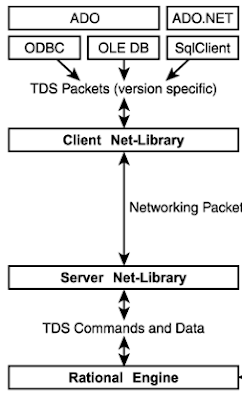"SQL Query Design Patterns and Best Practices" My review!
Hi Guys!
It’s been a while since the last post ...it’s been a lot of work!In the meanwhile SQL Server 2022 get its second CU (download) and SSMS has reached version 19.02 (download)
However we are here and so …welcome!
I must say I like to review books because this is also a good way to stay updated.
For this I say a big thanks both the publisher Packt and the kind Nivedita Singh for offering me, once again, the opportunity to talk about their new
book.
Packt is an English publishing house known worldwide and specialized in books related to information technology, including programming, web design, data analysis and hardware.
This new book will be published on March 22nd ( but yes you can preorded on Amazon here: https://packt.link/AYWje ) and it is related to the topic writing of Queries in SQL Server.
Its title is "SQL Query Design Patterns and Best Practices" and the authors are: Steve Hughes, Dr. Ram Babu Singh, Leslie Andrews, Dennis Neer, Shabbir H. Mala and Chi Zhang.
All the authors actually works in 3Cloud, a Gold-Certified Microsoft Azure technology consulting firm and Azure Expert Managed Services Provider.
3Cloud provides cloud strategy, design, implementation, acquisition and ongoing managed services to its clients across various industries.
All of them have been working in their industry for over 20 years.
And if you want to take a look at the previous review SQL Server Query Tuning and Optimization" by Benjamin Nevarez
SQL Query Design Patterns and Best Practices. The review.
One of the book’s focal points is to teach you to write query that are readable and mantainable.
The book has 270 pages and 4 sections where the first 3 are related to the T-SQL standard and the last is dedicated to the performance tuning.
In this book you will read about all the topics that you will need if you need to work with SQL Server.
In more detail.
The second section contains 4 chapters and I begin by explaining through examples how the (Common table Expression) commonly called CTE work. It is then shown how CTEs can also support recursivity.
The last chapter of this section is dedicated to security and shows how you can set access to individual tables per user.
The fourth and final section, talks about three important topics that have gained notoriety in recent years. These topics are: the management of JSON data in SQL Server, read file data and the contents of data lakes and finally the Jupiter notebook that allow you to manage and organize projects made of many queries in a single file.
For each chapter many examples to follow step by step are provided.
I think that if you work with SQL Server, all the topics presented in this book are to be known absolutely.
Previous post: How to get the n-th row in a SQL table ..in 4 different ways! Simple, clear and with example!






Comments
Post a Comment